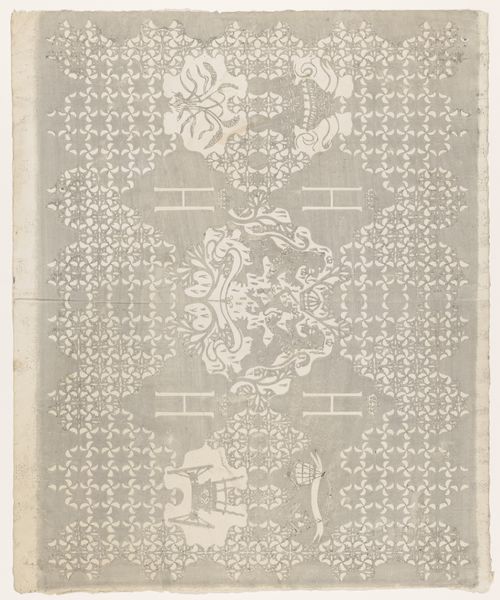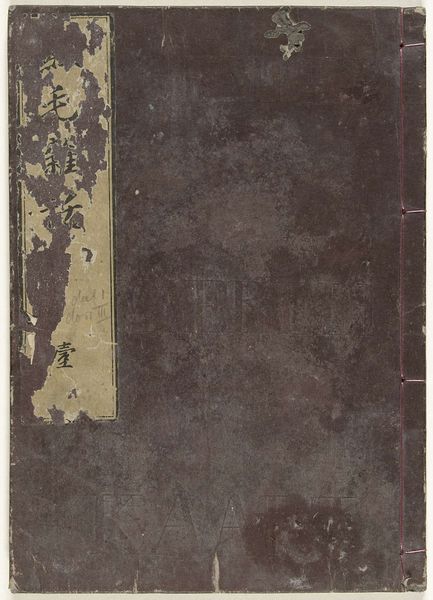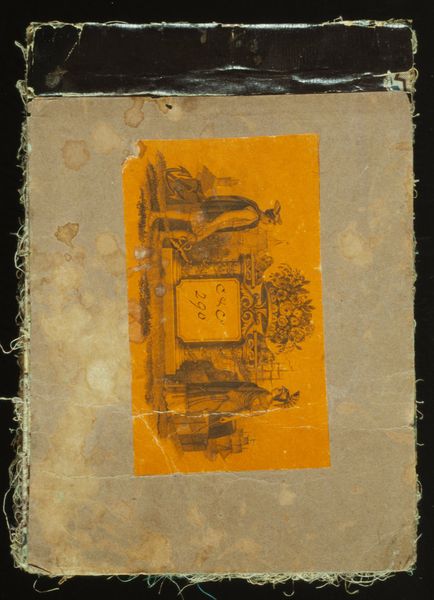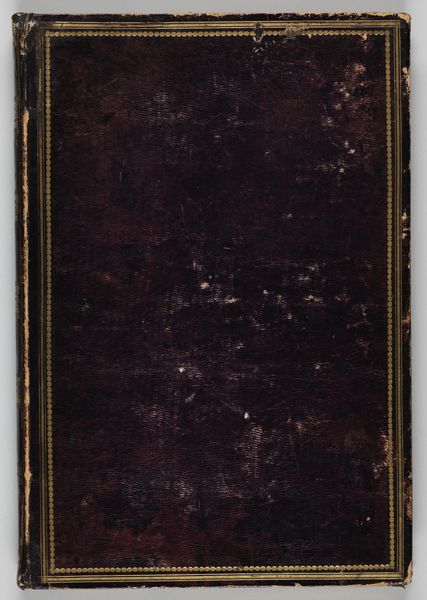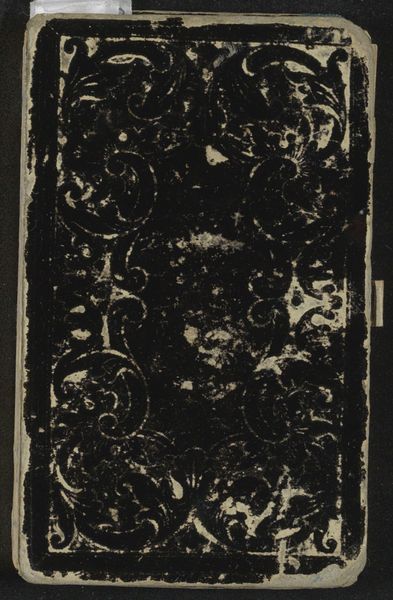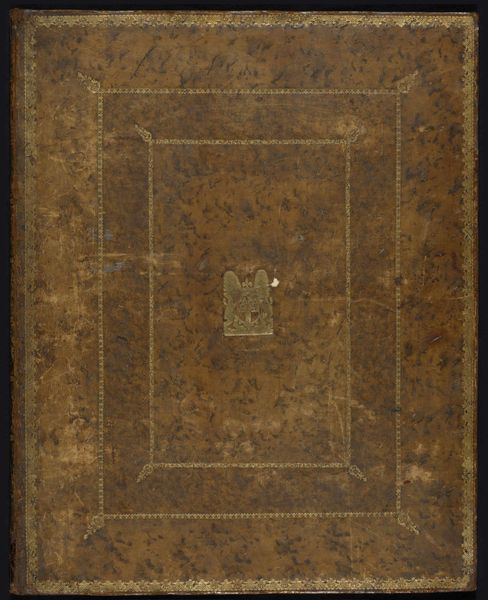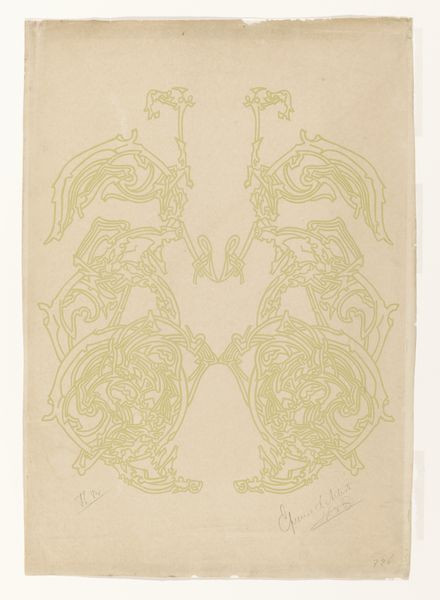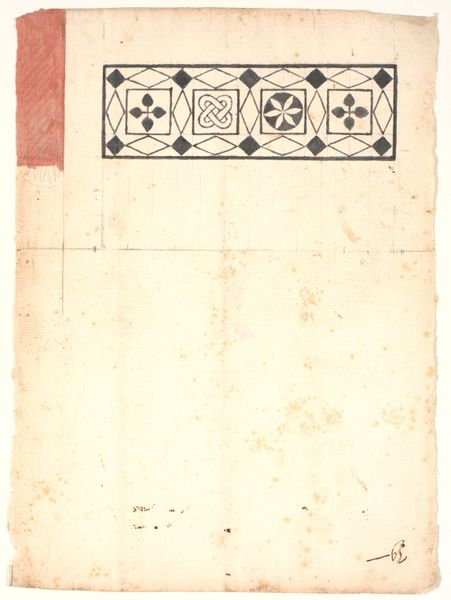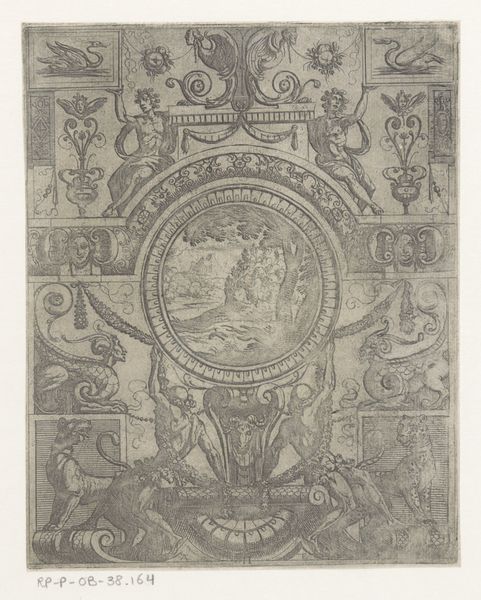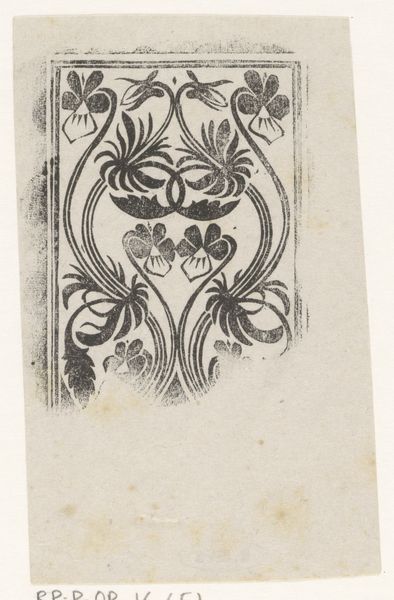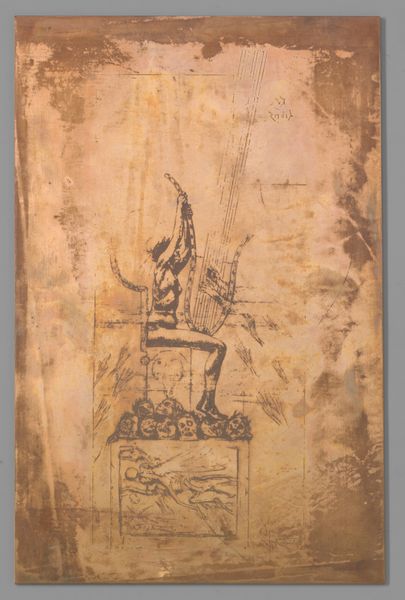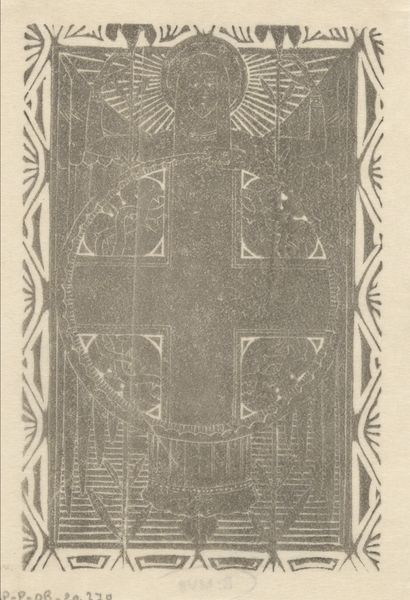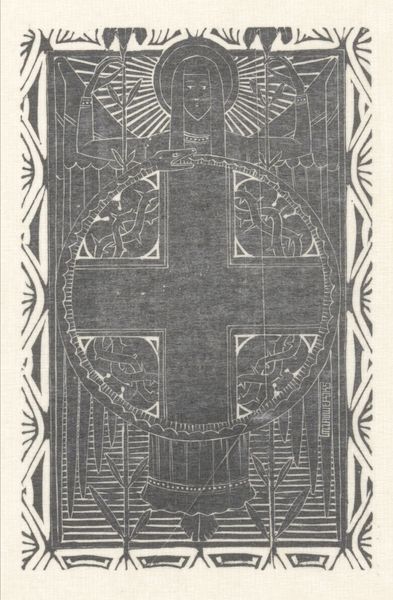
drawing, paper, pen
#
drawing
#
sculpture
#
paper
#
romanticism
#
pen
#
genre-painting
#
decorative-art
#
watercolor
Dimensions: height 178 mm, width 114 mm, thickness 15 mm
Copyright: Rijks Museum: Open Domain
Curator: Here we have an intriguing object titled, “Cassette voor een album amicorum,” which translates to "Case for a friendship album." It’s dated between 1770 and 1826, made by an anonymous artist. Editor: It's visually striking, isn't it? A weathered rectangular form with a delicate scene encased in an oval at its center. The surface, appears aged, perhaps even softened with time. It exudes a quiet, almost mournful romanticism. Curator: Indeed. "Friendship albums" were quite fashionable at that time, circulated amongst social circles, with people contributing poems, drawings, or other mementos. The case, in turn, becomes an object carrying not only artistic value but significant social weight. Editor: Precisely. I'm immediately drawn to the material reality of it: the paper, the faded pigments. You can almost feel the hand of the craftsman shaping it, the layers of paint built up with intention, the very specific shade of pink applied over a patterned surface. Was the creation of this sort of container considered 'high art,' or more of a craft, meant for utility first and foremost? Curator: That is a crucial question. While such cases served a practical function, their decoration involved skilled craftsmanship often associated with decorative arts. And consider, too, that the exchange and presentation of friendship albums reinforced social hierarchies, solidifying bonds among specific groups. The aesthetic choices here played a role in conveying status and taste. Editor: And did the choice of materials, such as the pen, watercolor, and paper, dictate the potential accessibility of this case? Or perhaps, does the decorative-art style indicate this as part of the burgeoning culture of accessible art-making in its day? Curator: Absolutely. The materials available reflect the socio-economic status of the commissioner, or the artist themself, shaping who could participate in this form of social exchange. Editor: It’s really about more than just sentiment, isn’t it? This is about the materiality of friendship and status in physical form, about labor, consumption, and social structure reflected through a practical object. Curator: Exactly! Its survival as a historical object now provides invaluable insight into the social practices and artistic sensibilities of the late 18th and early 19th centuries. Editor: So much more than just a pretty case! The details illuminate such complex relations of cultural values. Curator: It highlights how art objects functioned within and helped to construct their social world.
Comments
No comments
Be the first to comment and join the conversation on the ultimate creative platform.

